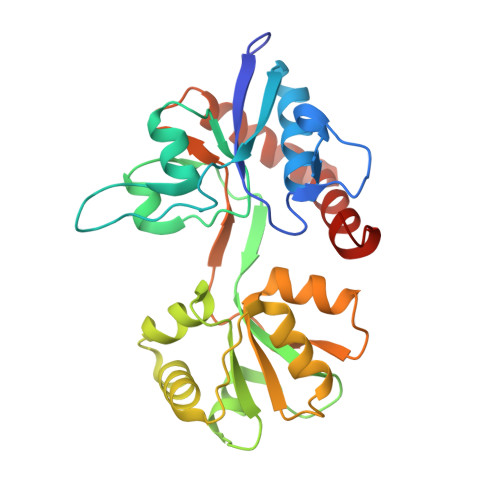Novel Functional Properties of Drosophila CNS Glutamate Receptors.
Li, Y., Dharkar, P., Han, T.H., Serpe, M., Lee, C.H., Mayer, M.L.(2016) Neuron 92: 1036-1048
- PubMed: 27889096
- DOI: https://doi.org/10.1016/j.neuron.2016.10.058
- Primary Citation of Related Structures:
5DT6, 5DTB, 5EHM, 5EHS, 5ICT - PubMed Abstract:
Phylogenetic analysis reveals AMPA, kainate, and NMDA receptor families in insect genomes, suggesting conserved functional properties corresponding to their vertebrate counterparts. However, heterologous expression of the Drosophila kainate receptor DKaiR1D and the AMPA receptor DGluR1A revealed novel ligand selectivity at odds with the classification used for vertebrate glutamate receptor ion channels (iGluRs). DKaiR1D forms a rapidly activating and desensitizing receptor that is inhibited by both NMDA and the NMDA receptor antagonist AP5; crystallization of the KaiR1D ligand-binding domain reveals that these ligands stabilize open cleft conformations, explaining their action as antagonists. Surprisingly, the AMPA receptor DGluR1A shows weak activation by its namesake agonist AMPA and also by quisqualate. Crystallization of the DGluR1A ligand-binding domain reveals amino acid exchanges that interfere with binding of these ligands. The unexpected ligand-binding profiles of insect iGluRs allows classical tools to be used in novel approaches for the study of synaptic regulation. VIDEO ABSTRACT.
Organizational Affiliation:
Program in Cellular Regulation and Metabolism, NICHD, NIH, Bethesda, MD 20892, USA.
















